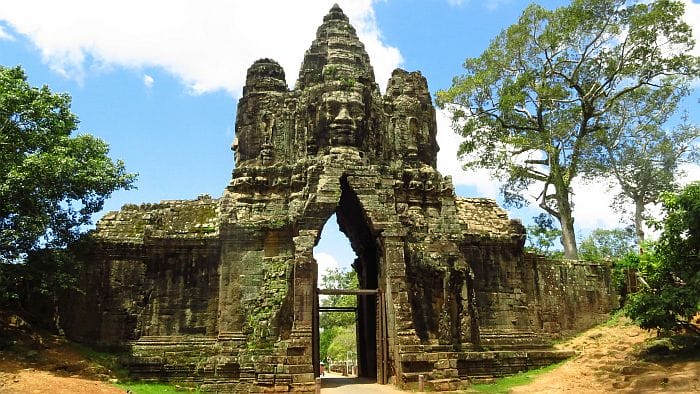The history of Sambor Prei Kuk goes back to the late sixth century, when Cambodia consisted of numerous small states; one of these was a kingdom on the Mekong ruled over by Mahendravarman, who extended his domain as far north as Khon Kaen in present-day Thailand. His brother Bhavavarman created his own kingdom by conquering lands in central Cambodia and territory as far north as Battambang, setting up his capital in the area of Sambor Prei Kuk. When Bhavavarman died in 598, the two kingdoms were merged under Mahendravarman, who retained Sambor Prei Kuk as his capital.

From 610 to 628 the area was known as Ishanapura and was ruled by Mahendravarman’s son Ishanavarman, who built the towers of the temple’s south group, the earliest at the site. With his death, the kingdom gradually declined and split into smaller states, though Sambor Prei Kuk remained inhabited; it was from here that Rajendravarman I came to take the throne at Angkor in 944, after which references to it disappear from the records. The site was cleared in 1962, but restoration and research were suspended at the outbreak of civil war in 1970, and post-Khmer Rouge the threat of guerrilla attack meant that it remained inaccessible up until 1998. Today, it is looting rather than insurgency that the guards stationed here are supposedly trying to forestall.
The site is easily visited by motorbike from Kompong Thom ($10 round trip), the journey taking about 40min. The site is seldom busy; tour groups, arriving on day-trips from Phnom Penh, are usually on a tight schedule, and if you just wait awhile you’ll have the place pretty much to yourself again. The admission charge is $3. There are food stalls near the ticket booth and a small shop.
The temple divides into three main sections: the north and south groups, which date from the seventh century, and the centre group, a ninth-century addition. Separated from these by the access road are the ruined sanctuary tower of Ashram Issey and the single-towered Prasat Bos Ram, which has a lion’s-head channel through which holy water flowed; it is now at ground level, but would originally have been more than a metre up the wall of the tower. The whole site is covered with the remains of towers, and carvings can be seen poking out from piles of earth or partly covered by undergrowth – exploring at random can throw up some real gems. If you’ve come with a driver, he may well know of new temples that have recently been uncovered.






